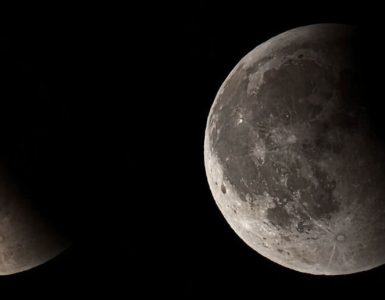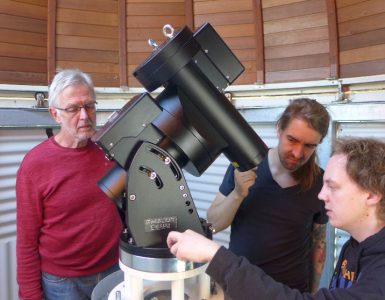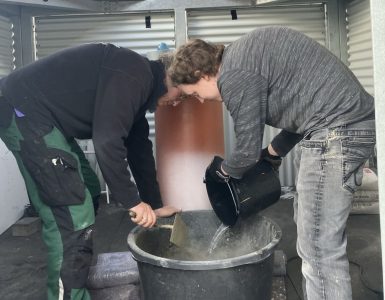The Cocoon Nebula (IC 5146) in the constellation Cygnus (above) has an apparent extension of about 10 arc minutes. This is one third of the diameter of the full moon. It is about 3000 light-years away from Earth, so its actual extension is about 10 light-years. The nebula is a star formation region consisting mainly of ionized atomic hydrogen (reddish in the image) and bluish dust. To the west (right) the elongated dark cloud Barnard 168 follows. Its densely packed molecules obscure the stars of the Milky Way behind it. Exposure time was 2.5 hours with a commercial DSLR camera with improved red sensitivity. Such cameras are available in the STScI school lab for relatively easily obtained color images of celestial objects.
 More complicated recording technology was necessary to display the nebula (NGC 896 – IC 1805) in the constellation of Cassiopeia. The object was photographed with a cooled CMOS camera through narrow-band filters, which allow only light from the ions of sulfur, hydrogen and oxygen to pass through. After assigning the light of these gas ions to the primary colors red, green and blue, a false-color image with great detail is obtained. Advanced sky observers can use this technique, which is also used by the Hubble Space Telescope, in our school lab.
More complicated recording technology was necessary to display the nebula (NGC 896 – IC 1805) in the constellation of Cassiopeia. The object was photographed with a cooled CMOS camera through narrow-band filters, which allow only light from the ions of sulfur, hydrogen and oxygen to pass through. After assigning the light of these gas ions to the primary colors red, green and blue, a false-color image with great detail is obtained. Advanced sky observers can use this technique, which is also used by the Hubble Space Telescope, in our school lab.
Images and text: Peter Stinner






Add comment